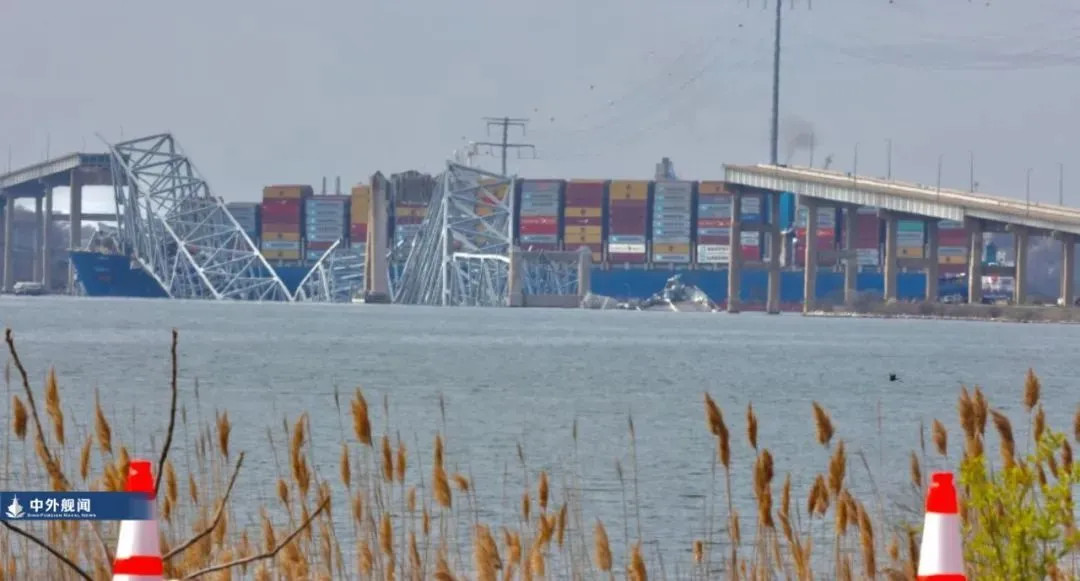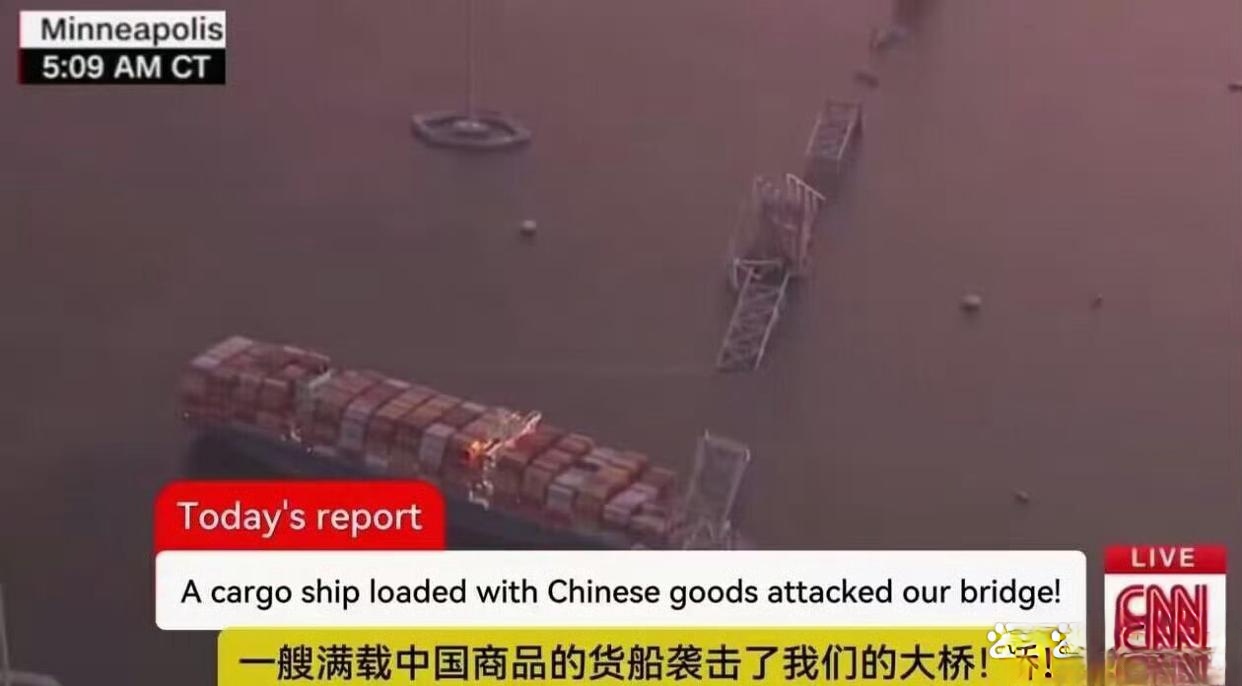First some background. The Singapore flagged container ship Dali was crewed by 20 Indians and 1 Sri Lankan. The ship was manufactured by Hyundai. It was carrying containers of Chinese goods. Quiz time, guess which is the culprit. The answer is at the bottom.
The first two blackouts occurred about 10 hours before the bridge collision, during in-port maintenance, after a crew mistakenly closed an exhaust damper causing a diesel engine to stall. A second blackout occurred shortly after backup generator came on.
The ship’s first power outage occurred after a crew member mistakenly closed an exhaust damper while conducting maintenance in port, causing one of its diesel engines to stall, according to the report. A backup generator automatically came on and continued to run for a short period — until insufficient fuel pressure caused it to kick off again, resulting in a second blackout.
Then the crew made changes to the ship's electrical configuration. I highly suspect the mistake that caused the initial blackout was not rectified, otherwise there was no need for such configuration change. In short, the crew didn't know what caused the initial blackout, they thought it was faulty transformer and breaker, so they just switched to alternate set without any verification if it's so. Remember the time from the first blackout to the bridge collision lasted only about 10 hours. A total of 4 blackouts occurred in this period. Did the crew managed to find out the cuase? The NTSB report that reveal this mistake took 7 weeks to investigate.
While recovering from those power outages, crew members made changes to the ship’s electrical configuration, switching to a different transformer and set of breakers, according to safety investigators.
The captain told the local pilot assigned to guide the ship out of the harbor that the ship was in good working order. When the ship was about half mile away from the bridge, power tripped and the crew manually restored power by closing the breaker.
At 1:25 a.m. on March 26, when the Dali was a little over half a mile away from the bridge, electrical breakers that fed most of the ship’s equipment and lighting unexpectedly tripped, causing a power loss. The main propulsion diesel engine automatically shut down after its cooling pumps lost power, and the ship lost steering.Crew members were able to momentarily restore electricity by manually closing the tripped breakers, the report says.
Just a quarter of a mile from the bridge the ship suffered a second power trip. Due to the power lost, the ship has lost its propulsion, the crew was unable to steer the ship leading to the collision.
The ship was less than a quarter of a mile from the bridge when it experienced a second power blackout because of more tripped breakers. The crew again restored power, but it was too late to avoid striking the bridge.
Apparently the crew have no idea what caused the power trip. Even after the electrical configuration change, it's still occurring. They could only resort to manual closing the breaker to restore the power, and it occurred again.
If the crew had rectified the initial mistake of closing an exhaust damper, then the subsequent power trips were either due to a wrong electrical configuration or Dali's electrical system being faulty. Remember again such blackouts didn't occur before the crew made the mistake that day. If it had blackout issues priorly then it strongly suggest a faulty electrical system that the NTSB report should raise as a concern.
She said investigators are working closely with Hyundai, the manufacturer of the Dali’s electrical system, to pinpoint what went wrong after it left the Port of Baltimore.She also reiterated another finding from the report, which said testing of the ship’s fuel revealed no concerns about its quality.

Investigation continues into 4 electrical blackouts on ship that caused Baltimore bridge collapse
By Lea Skene • Published May 15, 2024 • Updated on May 15, 2024 at 7:23 pmThe electrical blackouts experienced by the container ship Dali before it left Baltimore’s port were “mechanically distinct from” those that resulted in the deadly collapse of the Francis Scott Key Bridge hours later, according to congressional testimony Wednesday.
“Two were related to routine maintenance in port. Two were unexpected tripping of circuit breakers on the accident voyage,” National Transportation Safety Board Chair Jennifer Homendy testified.
The Dali was headed to Sri Lanka, laden with shipping containers and enough supplies for a monthlong voyage. Shortly after leaving the Port of Baltimore early on March 26, the ship lost power and propulsion and crashed into one of the bridge’s supporting columns, killing six construction workers.
Homendy’s remarks came the day after the safety board released its preliminary report into the bridge collapse. Their full investigation could take a year or more.
The ship’s first power outage occurred after a crew member mistakenly closed an exhaust damper while conducting maintenance in port, causing one of its diesel engines to stall, according to the report. A backup generator automatically came on and continued to run for a short period — until insufficient fuel pressure caused it to kick off again, resulting in a second blackout.
While recovering from those power outages, crew members made changes to the ship’s electrical configuration, switching to a different transformer and set of breakers, according to safety investigators.
“Switching breakers is not unusual but may have affected operations the very next day on the accident voyage,” Homendy testified Wednesday morning before the U.S. House Committee on Transportation and Infrastructure.
She said the board is still gathering more information about what exactly caused the various power outages. The FBI has also launched a criminal investigation into the circumstances leading up to the collapse.
When the breakers tripped as the Dali approached the bridge, Homendy said the ship’s emergency generator kicked on. That generator can power the ship’s lights, radio and other operations, but it can’t restore propulsion.
“Without the propeller turning, the rudder was less effective,” Homendy said. “They were essentially drifting.”
While there is redundancy built into the ship’s systems, she said it’s not unlike other vessels in terms of the functions of its emergency generator and other factors. She said investigators are working closely with Hyundai, the manufacturer of the Dali’s electrical system, to pinpoint what went wrong after it left the Port of Baltimore.
“We are still on scene and evaluating everything about this accident,” Homendy said.
She also reiterated another finding from the report, which said testing of the ship’s fuel revealed no concerns about its quality.
The safety board launched its investigation almost immediately after the collapse, which sent six members of a roadwork crew plunging to their deaths. Investigators boarded the ship to document the scene and collect evidence, including the vessel’s data recorder and information from its engine room.
The preliminary report details the chaotic moments prior to the bridge collapse while crew members scrambled to address a series of electrical failures that came in quick succession as disaster loomed.
At 1:25 a.m. on March 26, when the Dali was a little over half a mile away from the bridge, electrical breakers that fed most of the ship’s equipment and lighting unexpectedly tripped, causing a power loss. The main propulsion diesel engine automatically shut down after its cooling pumps lost power, and the ship lost steering.
Crew members were able to momentarily restore electricity by manually closing the tripped breakers, the report says.
The ship was less than a quarter of a mile from the bridge when it experienced a second power blackout because of more tripped breakers. The crew again restored power, but it was too late to avoid striking the bridge.
A last-minute mayday call from the ship allowed police to stop traffic, but they didn’t have enough time to warn a team of construction workers who were filling potholes on the bridge. One man was rescued from the water. A road maintenance inspector also survived by running to safety in the moments before the bridge fell.
The last of the six victims’ bodies was recovered from the underwater wreckage last week.
On Monday, crews conducted a controlled demolition to break down the largest remaining span of the collapsed bridge, which landed draped across the Dali’s bow. The ship is expected to be refloated and guided back to the Port of Baltimore early next week, officials said Wednesday.

The answer to the quiz.
